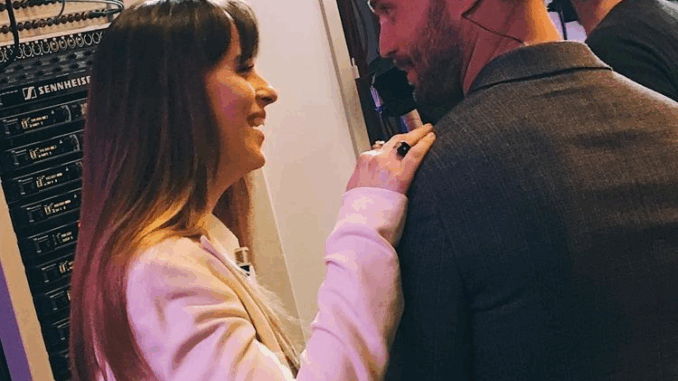
It sounds unthinkable now, but during early development of Fifty Shades Freed, several high-level creatives actually pushed for Christian and Ana to break up permanently in the final film. Not only that, but alternate drafts explored the idea that their passionate love story was always doomed to fall apart.
How close did this version come to becoming reality?
Very close—too close for fans’ comfort.
Sources who worked on the final installment revealed that an internal rift emerged between two creative camps. One side, led by members of the original book adaptation team, insisted that the movie should stay faithful to E.L. James’ ending—complete with marriage, child, and the illusion of a “happy ever after.”
But the other side? They wanted realism. They argued that the emotional volatility of Christian and Ana’s relationship—the jealousy, the trauma, the need for control—couldn’t simply be erased with vows and a baby.
Instead, these producers proposed a final act split, in which Ana leaves Christian for good after a moment of profound betrayal—not infidelity, but a lie he tells to protect her. They imagined an ending that showed Ana thriving independently, finding strength in freedom, not submission.
The original pitch even included a final shot: Ana walking alone on the beach, her wedding ring left behind on the sand.
So what stopped it?
According to insiders, the idea sparked intense debates that nearly derailed production. E.L. James herself reportedly threatened to pull out entirely if the ending was changed. “She created this world,” said one former executive. “To her, it wasn’t just fiction—it was personal.”
Jamie Dornan and Dakota Johnson were caught in the middle.
“Dakota was intrigued,” said a set source. “She liked the idea of Ana having agency. She didn’t want her to be remembered as the girl who gave everything up for a damaged man.”

Jamie, on the other hand, reportedly worried the twist would betray Christian’s growth. “He felt Christian had come too far,” the source added. “Ending it with heartbreak would erase everything the trilogy had built toward.”
In the end, the studio sided with E.L. James. The happy ending stayed. But whispers of the alternate plot still haunt die-hard fans who believe it might have given the series a deeper, more meaningful resolution.
“I would’ve respected the story more if it ended honestly,” one fan wrote. “Love isn’t always enough. Ana deserved a choice.”
The final film offered just a glimpse of the tension beneath their glossy exterior. But had those other writers won, Fifty Shades Freed could have ended not with a kiss—but with a goodbye.
We’ll never know if it would have worked.
But just knowing that Ana and Christian’s relationship almost ended in heartbreak reveals how fragile their love truly was—even behind the scenes.
And maybe, for some fans, that version rings truer than the one we got.
